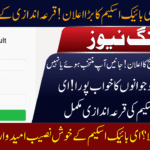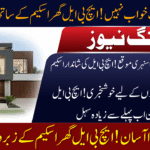The National Database and Registration Authority (NADRA) has taken another step toward making citizens’ lives easier by introducing a simplified process for obtaining birth and death certificates in Pakistan. This initiative is part of the government’s larger digital transformation plan, aimed at reducing paperwork, saving time, and ensuring that essential services are available to everyone with convenience.
For decades, getting a birth or death certificate in Pakistan was seen as a complicated process, requiring multiple visits to union councils and government offices. Long queues, slow processing, and lack of transparency frustrated citizens. But with NADRA’s latest reforms, the procedure has now become faster, transparent, and more user-friendly.
Key Features of the New NADRA Process
NADRA has redesigned the process with a focus on digital efficiency and easy access. Here are the highlights:
- One-Window Operation: Citizens can apply directly at NADRA centers or designated service desks without running from office to office.
- Digital Records: All birth and death entries are stored digitally, reducing the risk of errors or record loss.
- Biometric Verification: Applicants must verify their identity through NADRA’s biometric system to prevent fraud.
- SMS Updates: Applicants now receive real-time SMS updates about the status of their application.
- Quick Delivery: Certificates can be issued within a few working days, compared to the weeks-long delays in the old system.
How to Apply for a Birth Certificate
- Visit the NADRA Center nearest to your location.
- Carry the hospital-issued birth slip or related documents.
- Present the parents’ CNICs for verification.
- Fill out the digital application form provided at the desk.
- Complete biometric verification to confirm identity.
- Submit your application and wait for confirmation via SMS.
Once the process is complete, you will be able to collect the official birth certificate or get it delivered to your home (where home delivery is available).
How to Apply for a Death Certificate
- Go to the nearest NADRA or union council center.
- Provide the hospital death certificate or any authorized medical document.
- Submit the deceased’s CNIC (if available).
- Provide heirs’ CNICs for legal verification.
- Complete the application form and biometric verification.
- Receive SMS updates until the certificate is ready.
The new system makes it easier for families to obtain death certificates quickly, which are essential for inheritance, property transfer, insurance claims, and legal matters.
Quick Details – NADRA’s New Birth & Death Certificate Process
| Service | Requirement | Processing Time | Where to Apply |
|---|---|---|---|
| Birth Certificate | Hospital birth slip + Parents’ CNIC | 3–5 working days | NADRA Centers / Service Desks |
| Death Certificate | Hospital death slip + CNIC of deceased | 3–5 working days | NADRA Centers / Union Councils |
| Updates | SMS alerts | Real-time | Registered Mobile Number |
| Verification | Biometric confirmation | On the spot | NADRA Biometric System |
Benefits of the New NADRA Service
- Faster Processing: Reduced waiting time for certificates.
- Transparency: SMS notifications keep applicants informed.
- Security: Biometric checks prevent misuse or fake entries.
- Digital Records: No more missing files or manual errors.
- Accessibility: Service available across major NADRA centers nationwide.
Public Response
Citizens have welcomed this initiative, calling it a much-needed reform. Many families who previously waited weeks to obtain certificates are now able to complete the process within days. Online discussions on social media also reflect appreciation for NADRA’s efforts to make essential documents more accessible.
Conclusion
With this new reform, NADRA has made the process of getting birth and death certificates easier than ever before. By digitizing records, ensuring biometric verification, and introducing SMS updates, the authority has reduced delays and improved transparency.
This move not only helps families obtain essential documents quickly but also strengthens Pakistan’s journey toward digital governance and citizen-friendly services.









